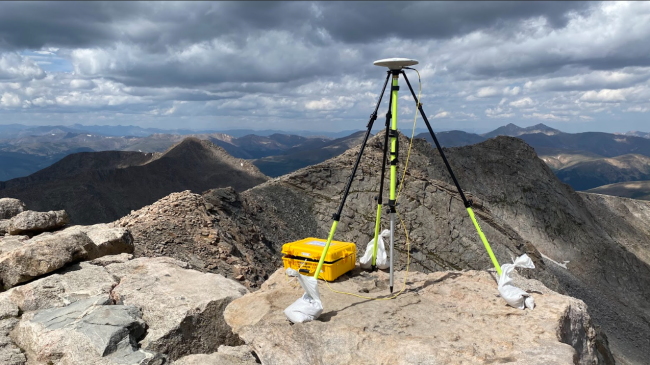Data provides vital clues for weather prediction
In a remote region of the Indian Ocean lies the source of a mysterious weather pattern with tentacles that stretch across the tropics, influencing everything from monsoons in India to heat waves and flooding in the United States.

Scientists and crew tend to an observing buoy in the Indian Ocean. This buoy is one of 46 observing instruments in the RAMA array. (Image credit: NOAA)
Not as well known as El Nino, this phenomenon is called the Madden-Julian Oscillation, named for Rolland Madden and Paul Julian, two scientists who discovered it in the 1970s. It starts when water vapor rises out of the Indian Ocean every 30 to 60 days to create a major ocean storm that travels west to east from near the Seychelles off Africa toward India, crosses into the tropical Pacific Ocean and eventually affects weather patterns across the nation.
In the next week, a team of 20 NOAA scientists will journey to Goa, India, to meet with 200 of India’s leading ocean, atmosphere, and fisheries scientists to mark a decade of productive collaboration on ocean and atmospheric observations, with life-saving economic benefits for both nations. The most significant result is the vitally important Indian Ocean observing system of buoys, the world’s key tool for early detection of monsoons which affect the safety, food supply, and economies of one-third of the world's population.
These buoys are also at the heart of detecting the Madden-Julian Oscillation, providing data that NOAA depends on for U.S. weather prediction two to four weeks out.
Improving our understanding of this weather pattern is among the topics that NOAA scientists will work with Indian scientists on at the Second India-United States Colloquium on Earth Observations and Sciences for Society and Economy, June 11-13. Other topics include advancing tropical cyclone forecasting and understanding harmful algal blooms, which have become a serious threat to valuable Indian Ocean fisheries. NOAA is working with India on this research because there are parallels with how ocean changes in the Pacific may affect important fisheries off the U.S. West Coast.

To underline the importance of the U.S. - Indian science collaboration, NOAA has arranged for NOAA Ship Ronald H. Brown to arrive in Goa’s nearby port of Mormugao to participate in the colloquium and welcome local schoolchildren on board for a World Oceans Day tour. The ship is steaming around-the-world on a mission to improve ocean observations that underpin U.S. weather and climate prediction. At the end of the colloquium, NOAA and Indian scientists will set off on the Brown to launch three new buoys in the Indian Ocean observing system. The buoys will be moored in the Arabian Sea, an area where little data has ever been collected. Closing this data gap is expected to make the Indian Ocean observing system even more valuable to both nations and the world.
Media contact
Monica Allen, 301-734-1123


